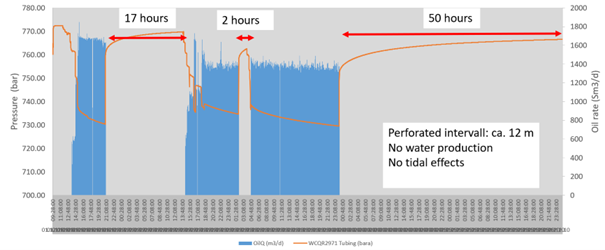The Norwegian Petroleum Directorate (NPD) was considering an application on Decision of Continuation from the Operators on two discoveries made in the Norwegian North Sea.
As a government agency responsible for the regulation of petroleum reserves and resources on the Norwegian Continental Shelf, it was crucial that the NPD made the right decision – one that served the best interests of the region.
The challenge
Uncertainty over the accuracy of Drill Stem Tests (DST) and a need for trusted expertise
Given the potential investment level in the discoveries, NPD needed to understand if developing both discoveries would be commercially viable and benefit the Norwegian Continental Shelf. But this wasn’t straightforward; the initial Drill Stem Tests (DST) carried out on both sites led to disagreements and uncertainty.
On one of the discoveries, the northern DST indicated poor properties, with concerns over the validity of the test. On other prospect, indications of segmentation and questions over communications across two segments led to fears over whether a potential producer could successfully drain oil from the opposite side of its possibly tight fault.
At the time, the NPD’s expertise in well test analysis required additional independent expert support it could trust. As a result, AGR was engaged to train NPD staff on well test analysis and also offer an independent review on the discoveries.
About the discoveries under scrutiny
The reservoir of the first discovery contains oil in the Cook Formation. Five wells have been drilled and, at the time of the analysis, only two had a drill stem test – one of which identified poor reservoir properties.
The project itself had been delayed due to uncertainty surrounding the properties in the northern part of the reservoir, along with the long distance to host, resources required and questions over Pressure, Volume and Temperature (PVT) quality.
A drill stem test on the second discovery had been undertaken in one of the three discovery wells and, partly based on the operator’s DST analysis, the oil resources estimation was reduced.
However, discussions in the license regarding segmentation and communication across faults meant that the NPD needed to know:
- If the producer in the main A segment could drain the oil in the neighbouring B segment.
- If the DST gave a true indication of the distance to the fault and whether it would be sealing.




